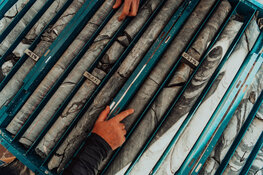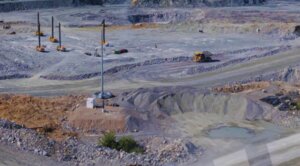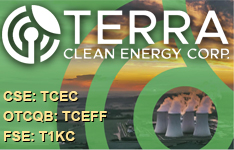The Gold Report: Duane and Morgan, talking with you is a wonderful opportunity to introduce our readers to the prospect generator business model, which Almaden Minerals Ltd. (AMM:TSX; AAU:NYSE) pioneered. Can you tell us how that came about?
Duane Poliquin: Early in my career as a geological engineer, I worked around the world for companies like Placer Development and Kaiser Steel. Along the way, I became a goldbug. In 1972, I quit my job and announced to my wife that I was going to start my own gold company. We found a nice prospect in Nevada, and two years later did an initial public offering (IPO) for what was called Westley Mines Ltd.
The markets were terrible then, so the first people I hit up for the IPO were family and friends. They bought up 40% of it and I was having a hard time selling the balance. Necessity being the mother of invention, I went to a major company that wanted to option the property. Instead of a down payment on the option, the company took part of the IPO financing. At that point, the brokers jumped in and cleaned up the rest of it.
After some drilling we got the property back, we drilled more holes on our own and optioned it out yet again. With more drilling, it became obvious that it would be a mine. The stock had moved from $0.40/share to as high as $7/share and shortly thereafter we were bought out. The company that acquired Westley, in turn, flipped it to Homestake Mining Co., which actually mined it. It was a win-win-win, and it became our model.
In those days, brokers were not interested in a company being run by a geologic engineer. They wanted to deal with a promoter. Well, I was my own promoter. I had generated prospects for my previous employers, so I figured I could generate new properties, get some payments from outsiders and keep some percentage to keep the doors open. That was the beginning of the prospector model. I did a deal on the prospect, kept an interest and the other company worked on the project.
TGR: It sounds similar to the model used by the oil and gas industry.
DP: Rick Rule deserves credit for calling it the prospect generator model, and he did get the name from the oil and gas industry.
TGR: When did Almaden start up?
DP: We went public with Almaden in 1986.
TGR: A lot of your focus in is Mexico. Do you have properties in other countries as well?
DP: Our beat, if you will, is the North American Free Trade Agreement area.
Mexico basically missed the 20th century in terms of exploration. Until 1992, foreigners could own only 49% of a project. When Mexico finally opened up to foreign investment, a lot of companies went there.
We found a little mine called Trinidad that we sold to Eldorado Gold Corp. (ELD:TSX; EGO:NYSE), which put it in production. That is just one example of how we have used our prospecting model in Mexico.
TGR: With how many companies do you have joint ventures?
Morgan Poliquin: We have about six joint venture option agreements. Recently, the number of option agreements has decreased because the markets have been challenging for option partners. But that is part of the business plan. We can generate more properties than we can drill ourselves. We still believe the more irons in the fire, the better.
TGR: On how many properties does Almaden currently own a royalty?
DP: We have quite a few royalties, 15.
TGR: All with producing companies?
MP: All are exploration projects at this point. None of them is in production.
DP: Two of them are near term, however.
TGR: Tell us more about your efforts in Mexico.
MP: We have a specific geologic focus on eastern Mexico. The western mountain ranges in North America have huge, historic deposits. In Nevada, for example, you have the Comstock Lode and the Mother Lode, but there are far bigger deposits to the east.
The same is true of Mexico in that it has a western belt of high-grade, silver-gold mines. But the exploration work that found the Carlin Trend and the Bingham Canyon in the Eastern Great Basin was not done in Eastern Mexico. We thought there was great potential and great geologic opportunity there.
DP: And no competition.
TGR: In terms of the geology, do you see eastern Mexico twinning the Carlin Trend or what we see in the Bingham Canyon?
MP: Bingham Canyon, certainly. We have a Bingham Canyon-like prospect in northern Mexico that is exactly the same age as Bingham Canyon. Geology does not stop at borders.
I took our eastern Mexico concept to BHP Billiton Ltd. (BHP:NYSE; BHPLF:OTCPK), which funded me to sit in a helicopter for a few years. Overall, we have been pursuing this concept for more than a decade. The geology was not understood. We have done an enormous amount of geological work to define belts of volcanos that are promissive areas for mineral deposits. We know which belts are likely to have mineral deposits and where they go. This presents a whole new geologic framework for exploration.
TGR: Is this a proprietary database that you own?
MP: It is, yes. The first discovery out of that work that will become a mine is Caballo Blanco, which has developed a resource.
It is owned by Goldgroup Mining Inc. (GGA:TSX), which is a fourth partner in the project. We acquired the property in the early 1990s as a raw prospect: no historic mining, no exploration, no drilling. We optioned it to different juniors and a couple of majors. Now, Goldgroup Mining is putting it into production.
TGR: And what about your Ixtaca project?
MP: The Ixtaca discovery further proves the thesis that eastern Mexico has merit. Ixtaca had no historic mining, no exploration. When we staked the claims, it was a first.
TGR: Where is Ixtaca in relation to Caballo Blanco?
DP: It is almost due west of Caballo Blanco, about a 2.5-hour drive east of Mexico City by paved road. In addition to outstanding geologic potential, this is an area of relatively good infrastructure. Caballo Blanco has a power plant on the property. Ixtaca is a 1.5-hour drive from the largest Volkswagen plant in the Americas, a paved road right to site.
TGR: I assume eastern Mexico does not have the political strife you see on the borders.
DP: Absolutely, knock on wood. Obviously, things can change, but we have no security risks to work at Ixtaca.
TGR: Are you directly involved in developing Ixtaca?
MP: We did a conceptual drill test program at Ixtaca for about $50,000. We were able to increase our market cap five times on that discovery. We like to combine our portfolio of exploration properties with quick, cheap and very effective drilling. We believe the odds are long that any one prospect will be a mine, so you need to increase the volume.
Sometimes when we option a property to a smaller company and its drilling does not come to fruition, the company loses its source of funding. To avoid that situation, companies sometimes push drilling into the future. But drilling is the way to create value in this business. We believe we have found a way to reduce the risk by doing more drilling earlier. That is what we did at Ixtaca.
TGR: Does that mean you own your own drills?
DP: Yes, we bought our first drill prior to 2008 because we wanted to reduce the cost of drilling and our partners in Mexico were having a hard time getting a drill when they needed one.
We now own five drills and have trained a crew of Mexicans to be outstanding drillers. We can drill for one-third of market rates. We have one large drill and four portable drills and we have gone as deep as 600 meters with the portable drills. The best thing about these drills is their portability. You do not have to build roads to transport them, which allows you to drill early and cheaply.
TGR: How do you move the drills around without roads?
MP: You can move them around on trails. You can move them in a pickup truck. They can be hand carried; you get two men at each corner of each piece, and you can lug it anywhere.
DP: They are designed on a tiny, turbo-charged Japanese diesel engine. They retain power at any altitude. Each has 35 horsepower. You put three of them in together and, bingo, you have a 105-horsepower diamond drill.
The original prospectors had a gold pan and a hammer. Today, the drill is a prospecting tool for hidden deposits.
TGR: Are you drilling only on Ixtaca?
MP: Our four portable drills are at Ixtaca. The fifth drill can go deeper and is a little less portable as a result. We plan to move that drill to another project adjoining Caballo Blanco, a portion of the property that we kept when we sold Caballo Blanco to Goldgroup. We think it is a high-percentile shot and will start drilling there.
TGR: Where does Ixtaca stand now?
MP: Since the discovery hole in August 2010, we have now 200 holes and counting. We expect to have our first resource—a snapshot, if you will—before the end of 2012.
We believe the resource will very likely grow beyond the boundaries of that snapshot, but it is a way to quantify work to date for our shareholders' sake. We think it is a real potential catalyst for value creation.
TGR: Are there other companies using your prospect generation model?
DP: Rick Rule has counted 20 others. Eurasian Minerals Inc. (EMX:TSX.V) and John-Mark Staude's Riverside Resources Inc. (RRI:TSX) are two good examples. But I think we are the only ones who have taken it to the level of having our own drills.
TGR: In a perfect world, what would happen with Ixtaca after you announce the resource later this year?
MP: We will always look to diversify through agreements in our portfolio of properties, principally because we can come up with new ideas faster than they can be drilled.
That being said, I believe there is more shareholder value in making a discovery. If a property does not make it through that first round of drilling, our preference is to move on to another property.
DP: At Ixtaca, we are working on a resource and metallurgy, but a dozen or more producing-type companies have already visited the property and signed confidentiality agreements. We have defined our skill set, and mining is not part of it.
Ultimately, we see a producing-type outfit coming forward at Ixtaca. Then we do what we do best, which is turning over properties and finding new projects. Even while we have been developing Ixtaca, Morgan has had crews out doing geochemistry and advancing other properties to the drill-ready stage.
In 2008–2009, we had to take some properties back from our partners for various reasons. Morgan and I sat down and chose eight projects to drill ourselves. Ixtaca was No. 3.
TGR: It sounds as if it was more than luck.
DP: We will never say that luck is not a factor.
MP: Yes, luck is a huge part of being a prospector.
TGR: Yes, but you saw something that others didn't. There is art as well as science in exploration.
MP: Knowing that these projects are long-shots makes it challenging to make decisions to drill, which is the big problem in the exploration industry. You do a lot of geophysical work. You try to create more certainty with surface work, which can be very expensive. But there is only one way to figure out whether there is something there: drill. If you can drill earlier and cheaper, you shorten the odds. You play the odds and roll the dice a lot.
TGR: Morgan and Duane, thank you for your time and your insights.
Duane Poliquin, founder and chairman of Almaden Minerals Ltd., received his degree in geological engineering in 1962 and has been active in mining exploration around the world ever since. In 1972, Poliquin identified the Santa Fe gold property in Nevada and formed Westley Mines Ltd. to explore the project. Westley was taken over and placed in production as a heap-leach operation by a division of Homestake. Before founding Almaden, Poliquin also initiated several other projects that became producing mines. After founding Almaden and doing an IPO in 1986, Poliquin indentified the Trinidad gold deposit in Mexico, which was subsequently sold with a royalty retained to Eldorado Gold Corp. and became that company's second mine. Having been in the exploration industry for many years, Poliquin has been through several metal and mining market cycles and remains confident that the next up cycle will be very rewarding.
Morgan Poliquin, CEO and president of Almaden Minerals Ltd., graduated from the University of British Columbia's Geological Engineering program in 1994. He earned his Master of Science degree in geology at the University of Auckland, studying geothermal systems and epithermal gold deposits and his Ph.D. in geology from the University of Exeter (Camborne School of Mines) studying the geology and mineral deposits of eastern Mexico. His Ph.D. research was combined with the prospecting program he led in eastern Mexico for the company. This exploration directly led to Almaden's involvement in the Caballo Blanco and Ixtaca projects and the subsequent discoveries made on these projects. Poliquin first came to work with his father at Almaden after finishing his master's degree in 1996 and directs Almaden's prospecting and property exploration programs.
Want to read more exclusive Gold Report interviews like this? Sign up for our free e-newsletter, and you'll learn when new articles have been published. To see a list of recent interviews with industry analysts and commentators, visit our Exclusive Interviews page.
DISCLOSURE:
1) Sally Lowder of The Gold Report conducted this interview. She personally and/or her family own shares of the following companies mentioned in this interview: None.
2) The following companies mentioned in the interview are sponsors of The Gold Report: Almaden Minerals Ltd. Streetwise Reports does not accept stock in exchange for services. Interviews are edited for clarity.
3) Duane Poliquin: I personally and/or my family own shares of the following companies mentioned in this interview: Almaden Minerals Ltd. I personally and/or my family am paid by the following companies mentioned in this interview: Almaden Minerals Ltd. I was not paid by Streetwise Reports for participating in this interview.
4) Morgan Poliquin: I personally and/or my family own shares of the following companies mentioned in this interview: Almaden Minerals Ltd. I personally and/or my family am paid by the following companies mentioned in this interview: Almaden Minerals Ltd. I was not paid by Streetwise Reports for participating in this interview.














































